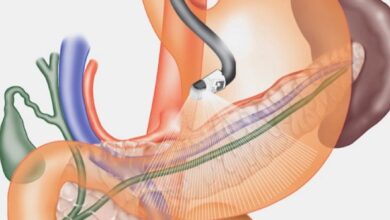Dwarfism vs Achondroplasia Similarities and FAQs
Dwarfism vs Achondroplasia
In this article we will provide you the information about the Dwarfism vs Achondroplasia Similarities and FAQs.
What does dwarfism mean?
Dwarfism is a genetic disorder characterized by abnormally short growth (height) of the affected person . Although there are many different forms of dwarfism, it generally occurs when the pituitary glands, thyroid, or other parts of the body do not produce the correct levels of hormones that stimulate growth. Symptoms include short stature and delayed maturation. People with dwarfism have additional challenges such as breathing problems, arthritis, and other problems related to the heart and kidneys. While dwarfism cannot currently be cured, there are treatments available to help manage the associated symptoms and improve the quality of life of the affected person.
What does achondroplasia mean?
Achondroplasia is a genetic disease that affects cartilage growth, and therefore causes an abnormal form of bone growth. It is associated with the presence of short limbs and a long trunk. Patients with achondroplasia may experience delays in motor and mental development , but are generally intelligent and independent if they receive proper education. The most common treatment is based on exercises to improve muscle tone, physical therapy to correct joint deformities and avoid respiratory or cardiovascular problems related to musculoskeletal complications. Achondroplasia has no cure , but there are many advances every day thanks to the constant study of this condition.
Similarities between dwarfism and achondroplasia
Dwarfism and achondroplasia are two related medical conditions. Both disorders affect the growth of the limbs, spine, and facial bones. Although they can be caused by different factors, both diseases are characterized by significantly short stature. Additionally, both dwarfism and achondroplasia can cause mental retardation or other physical problems; However, this complication is not universal for all cases of each condition. A final similarity between them is that there is generally no cure for dwarfism or achondroplasia; However, there are several treatments available to help relieve some symptoms and improve the patient’s quality of life.
Differences between dwarfism and achondroplasia
Dwarfism is a general term to describe extremely reduced short stature due to some genetic or non-genetic condition. Achondroplasia , on the other hand, is an inherited bone and cartilage disorder that is characterized by different common bone abnormalities, such as a short neck, flat feet, and hands with curved fingers. In many cases of achondroplasia there is mild mental retardation but it is associated with minor cardiovascular problems. Individuals affected with achondroplasia are shorter than normal; However, its height varies widely between each affected person as the symptoms can be mild to moderately severe. Typically, the height of the average adult with achondroplasia is between 1 meter 45 centimeters and 1 meter 75 centimeters.
Frequent questions about Dwarfism vs Achondroplasia
What is the difference between dwarfism and achondroplasia?
The difference between dwarfism and achondroplasia is that dwarfism refers to a significantly shorter than normal height, due to any cause. They can be caused by genetic or environmental factors. On the other hand, achondroplasia is a congenital bone growth disorder characterized by short limbs and a long torso. It is caused by a recessive genetic defect linked to chromosome 4.
What are people with dwarfism called?
People with dwarfism are known as “short people.”
What is the average lifespan of a dwarf?
The average lifespan of a dwarf depends on the type and breed. Common dwarves have a life expectancy between 50 and 100 years, while elven dwarves can live up to 200 years.
What are the types of dwarfism?
The types of dwarfism are:1. Achondroplastic dwarfism: The most common form of dwarfism, characterized by low growth and short limbs. 2. Pituitary dwarfism: This occurs when the brain does not send enough growth hormones to the body. 3. Turner syndrome: Causes developmental delay due to an X chromosome being lost during early cell division of the human embryo. 4. Prader-Willi Syndrome: It is caused by problems with genes and can result in intellectual disability, obesity, respiratory problems and other disorders related to mental or physical health. 5. Multiple epiphyseal dysplasia (MPS): is a rare inherited condition that causes bone abnormalities and even mental retardation or mild hearing loss for children affected by this condition
What is achondroplasia and why does it occur?
Achondroplasia is a genetic disorder that affects bone development. It is characterized by the presence of short limbs and craniofacial anomalies. It occurs due to a defect in the FGFR3 gene, which interferes with the production of proteins necessary to form long bones. The gene defect can be inherited or acquired during intrauterine development. This condition is commonly considered the most common form of human nanism.
How long does a person with achondroplasia live?
The life expectancy of a person with achondroplasia depends largely on the medical care and lifestyle they lead. Most people with achondroplasia reach adulthood without any problems, but there are some important factors to consider. The risk generally increases if there are complications related to the condition, such as sleep apnea or a deviated septum. Recent studies have shown that people with achondroplasia can live to be 60-70 years old.
What is achondroplasia and its two types?
Achondroplasia is a genetic disorder that affects bone growth and development. It is caused by the mutation of a single gene, called FGFR3. Achondroplasia is characterized by short stature, short limbs, short fingers, and abnormally large width at the shoulders and hips. There are two main types of achondroplasia: homozygous (one copy of the gene defective in both inheritances) and heterozygous (one copy of the gene defective in only one inheritance).
How does a person with achondroplasia live?
A person with achondroplasia lives a relatively normal life. Although there are some limitations in physical activity, these individuals can develop similarly to their unaffected peers. They can attend school or work as adults, have relationships, and lead healthy lives. However, doctors often recommend that people with achondroplasia receive specialized care to ensure they develop without additional complications.




